Fabric Dyeing Process in Pakistan That Delivers Color Precision & Long-Lasting Results
Frustrated that your fabric turns out patchy or the colours fade after a few washes? Would your dye batches never quite match, leaving unhappy clients or wasted textiles? Pakistani textile mills, designers, and regional dyers are all too familiar with these annoyances. The problem frequently stems from uneven water quality, imprecise measurement, and antiquated equipment that has not kept up. Enter a refined, hands‑on Fabric dyeing process in Pakistan, one that tackles each step with clarity and control. When you follow this method, your batches emerge with rich, even shades that retain their strength through wash after wash.
I will explain a straightforward, useful fabric dyeing procedure in Pakistan in the paragraphs that follow, including everything from pre-treatment and dye bath preparation to temperature control, rinsing, finishing, and quality checks. I will explain the significance of each step and how to implement it in even the tiniest home workshop or studio. You may increase color fastness, reduce rejects, save money, and establish a reliable reputation that your clients will appreciate by adhering to these guidelines.
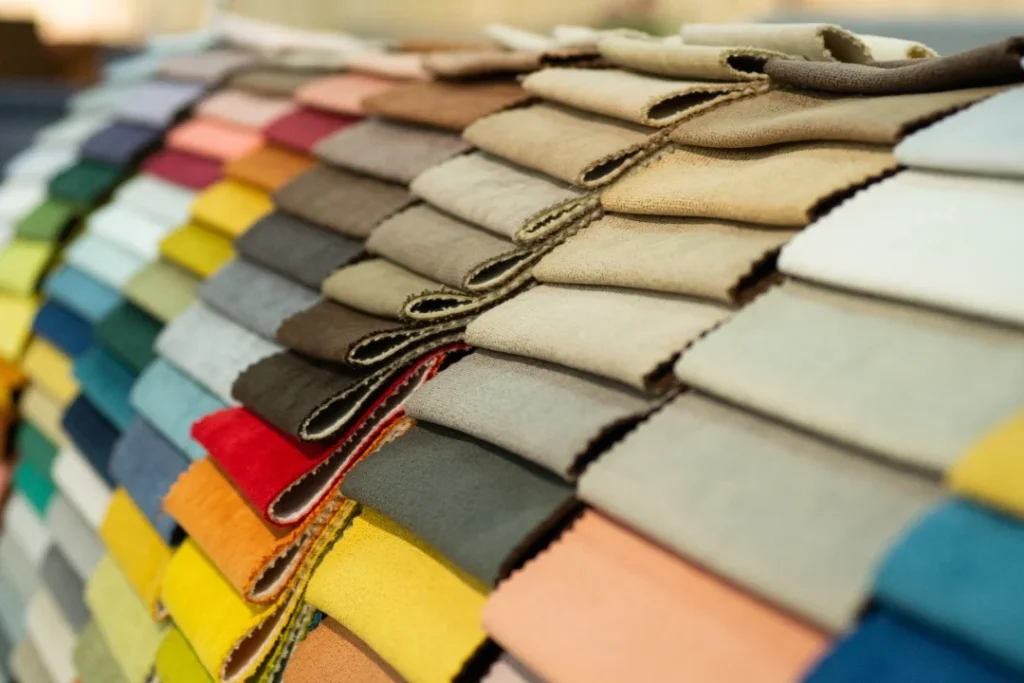
Pre‑Treatment and Scouring
Begin each job by thoroughly cleaning the fabric:
- Remove oils, sizing agents, and impurities using a mild alkali detergent at 60–80 °C.
- Rinse well until rinse water reaches near-neutral pH (~7). Treat hard water if needed.
- For blends (cotton–polyester), also include reducing agents to remove optical brighteners.
This groundwork ensures dyes penetrate evenly, an essential part of a reliable Fabric dyeing process in Pakistan.
Crafting the Dye Bath
The next step is careful planning:
- Choose dyes that are appropriate for your fabric: disperse for polyester, reactive for cotton, and acid for silk or wool.
- To prevent clumping, completely dissolve the color in warm water.
- Make use of a 1:20 or 1:30 liquor ratio (fabric weight divided by bath volume).
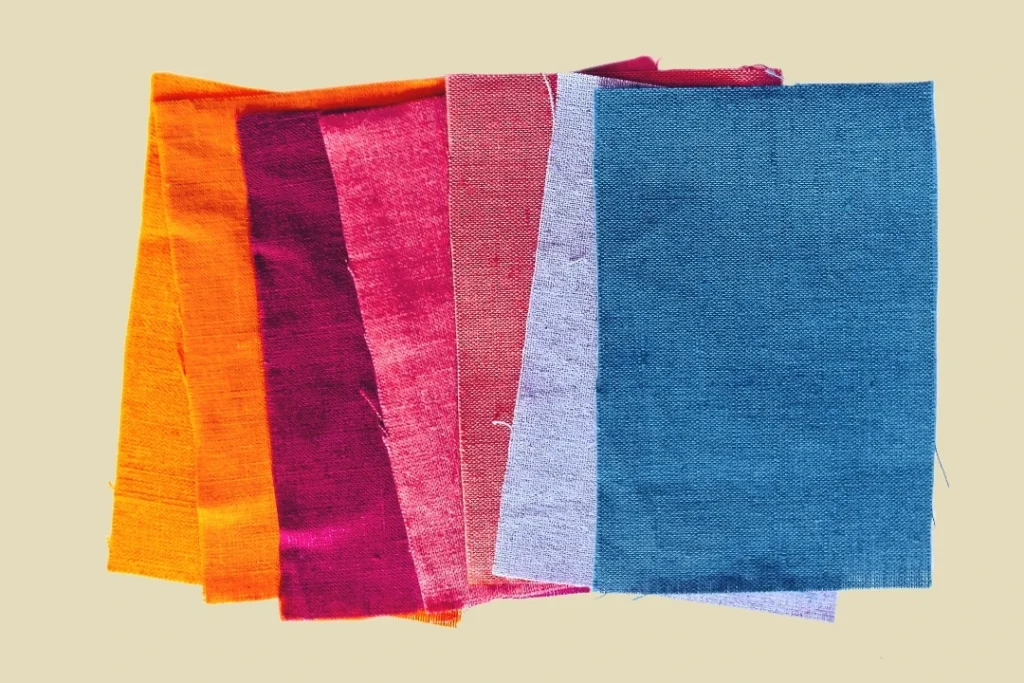
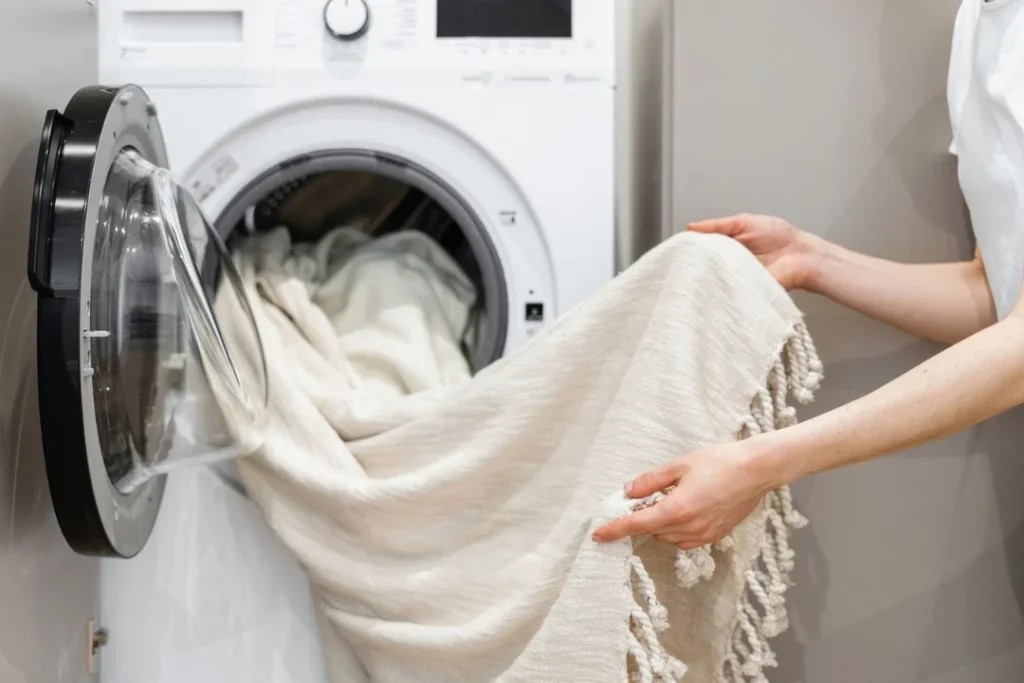
Temperature and Timing
Heating and timing must be under control:
- Increase the temperature gradually, for example, by 20 minutes from 40°C to 80°C. Uneven penetration is caused by abrupt jumps.
- Depending on the type of dye, keep the fabric at its working temperature for 45 to 60 minutes.
- From beginning to end, keep an eye on things with a calibrated thermometer or probe.
- This degree of control guarantees that your fabric dying procedure in Pakistan produces reliable, repeatable outcomes.
Rinsing and Fixation
After dyeing:
- Cool the bath, empty the majority of the water, and start washing.
- Before switching to cold rinses till it runs clear, start with warm ones.
- Add a hydrogen peroxide wash or a light alkaline rinse for reactive dyes, and rinse in acidic water for acid dyes to preserve color.
This crucial stage stabilizes shade fastness, a must in professional Fabric dyeing processes in Pakistan workflows.
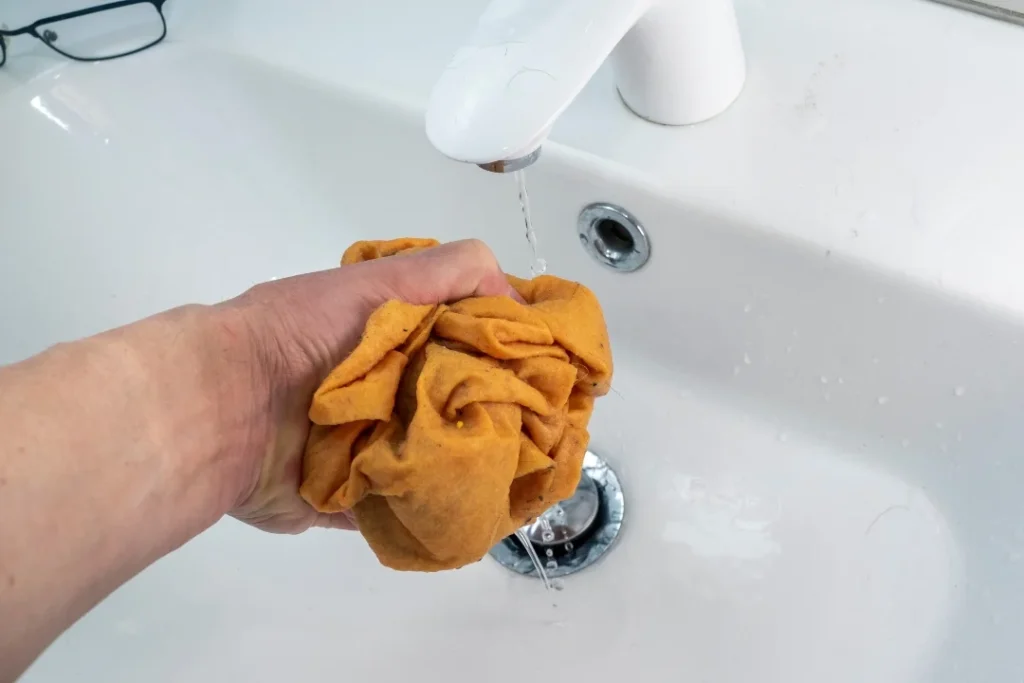
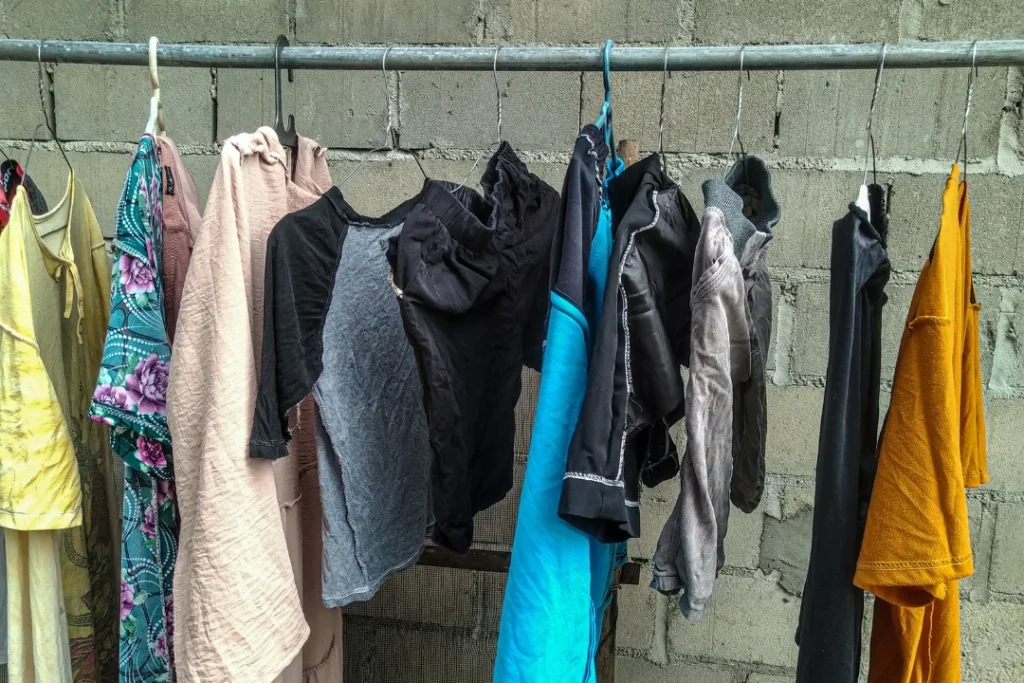
Drying and Finishing
Once rinsed:
- Remove excess water via gentle wringing or low‑spin tumble.
- Prefer controlled drying methods (like tunnel or cylinder dryers) over sun‑drying, which risks UV fade.
- Add finishing touches: fabric softener for handfeel, gloss finish for visual appeal, or functional finishes (e.g., UV protection or antimicrobial) if needed.
These touches help turn dyed cloth into polished, market‑ready products.
Quality Evaluation
Quality control ensures consistent excellence:
- Compare each run against shade cards or use a spectrophotometer.
- Test fastness: washing, crocking, light exposure.
- If any batch drifts, record pH, salt, temperature, and time, and adjust.
- Keep logs for reproducibility in future runs; this is professional best practice for any thorough Fabric dyeing process in Pakistan.

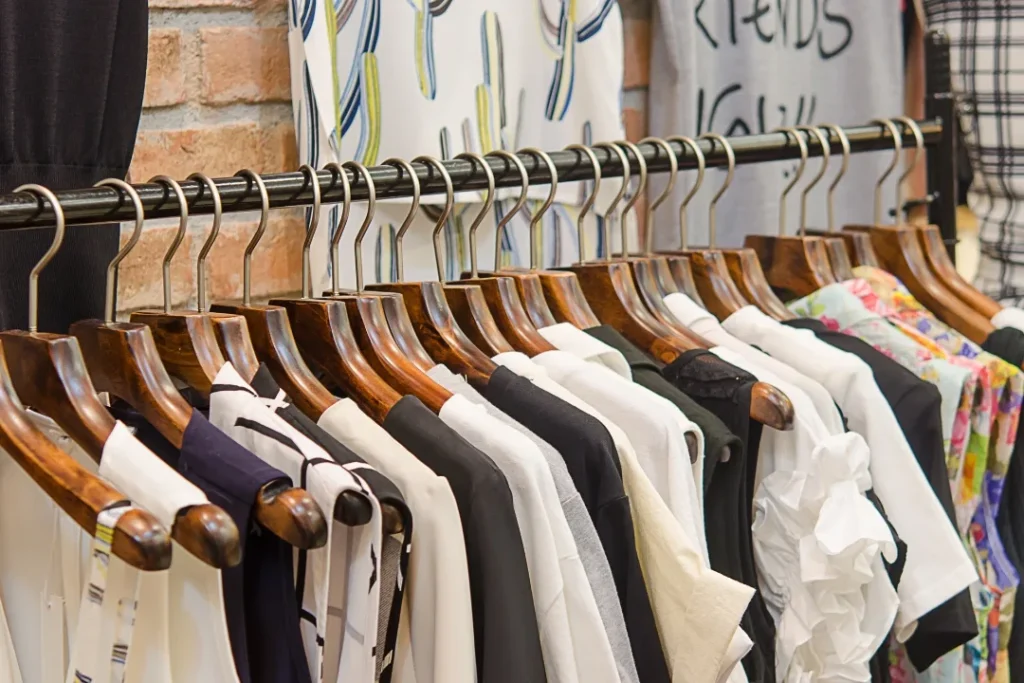
Caring for Water and the Environment
In Pakistan, water varies widely, from Karachi’s hard mains to Sindh’s brackish wells:
- Install softeners or reverse osmosis systems to achieve a consistent pH.
- Treat dye effluent: Many mills now use biological treatment plants or systems that recycle rinse water.
- Use eco‑friendly dyes (low‑impact reactive, natural, or non‑azo).
- Where permitted, reclaim rinse water or install zero‑liquid‑discharge systems.
These measures reduce waste and meet environmental standards, adding value to your Fabric dyeing process in Pakistan, especially if you’re eyeing export markets.
Right Tools for the Job
Scale and machinery shape your process:
- Use paddle dyeing or winch units for block‑printed or handcrafted textiles.
- Jet dyeing suits lightweight or delicate materials; beam dyeing works well for rolls of woven fabric.
- For smaller studios, compact vertical dye units with pre-measured dye packets maintain consistency across batches.
Choosing the right tools lets you deliver reliable colours, whether in artisan setups or larger-scale textile production.
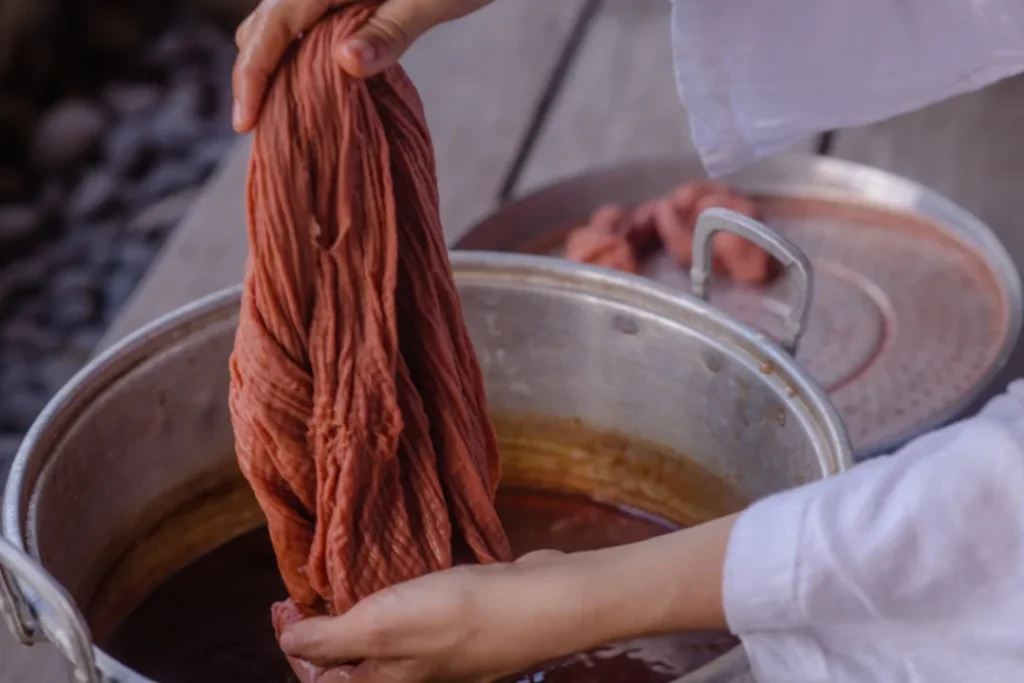

Blending Tradition and Structure
Pakistan’s heritage techniques, like ajrak, indigo vats, and bandhani, can benefit from structure:
- Pre‑treat fabrics to prevent bleeding.
- Maintain a steady temperature in indigo vats to keep that signature blue uniform.
- Standardize water volume and mordant ratios to strengthen durability.
- Apply pH control even in natural dyeing to enhance fastness.
This marriage of tradition and discipline refines the Fabric dyeing process in Pakistan and brings artisan methods into reproducible quality.
Common Snags and Fixes
Here are frequent hiccups and solutions:
- Uneven shades? Mix dyes well; check pre-treatment, pH, and water hardness.
- Bleeding colours? Rinse longer; ensure fixatives are added correctly.
- Fading too quickly? Use UV-safe dyes or apply a protective finish.
- Shade mismatches between batches? Document recipe details and repeat the proven process.
- Effluent issues or salt overload? Cut salt use, treat wastewater, or switch to lower-impact dyes.
By resolving these issues, your Fabric dyeing process in Pakistan stays dependable, even as factors change.
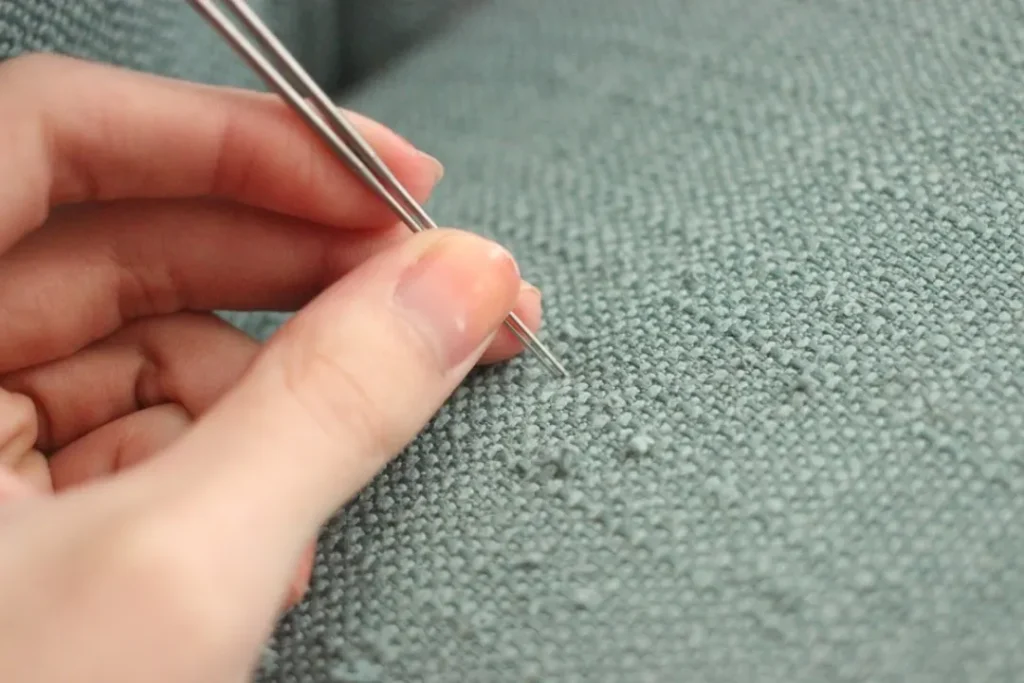

Workshop Turnaround Story
A small Faisalabad workshop shared their journey:
- They began with inconsistent kettle dyeing and high rejection rates.
- After adopting scouring, consistent salt dosing, and a small dye machine with digital controls:
- Waste dropped by 15 percent.
- Shade accuracy improved.
- They secured export clients.
They followed the same structured Fabric dyeing process in Pakistan outlined here, and turned their workflow into a selling point.
Why It Works
- You take an active role in each step, with no guesswork.
- Chemicals and dyes are measured carefully, cutting waste and boosting consistency.
- Temperature and pH monitoring account for Pakistan’s diverse water conditions.
- Quality checks back up visual appearance and fastness, leading to fewer complaints.
- Waste reduction through process control saves money and helps the environment.
Adopting this structured Fabric dyeing process in Pakistan raises your craft from variable to dependable.
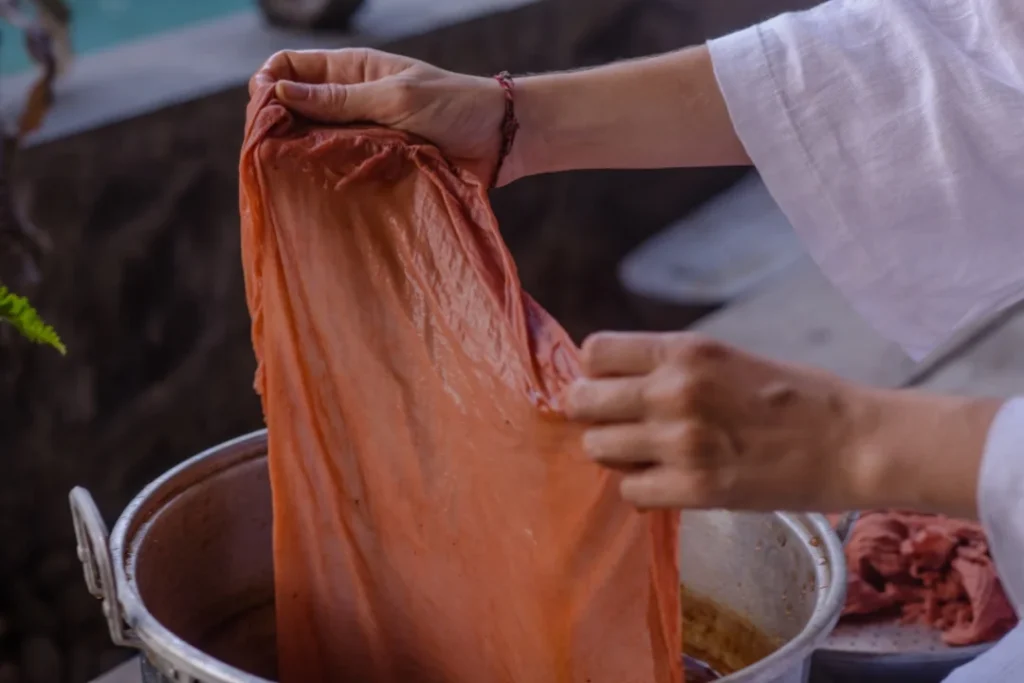

Moving Ahead, Growth and Compliance
As you scale:
- Automate dosing for accuracy.
- Upgrade to jet or beam dyeing units for larger, repeatable lots.
- Pursue certifications like GOTS or OEKO‑Tex to attract international buyers.
- Train staff regularly, consistent technique matters as operations grow.
- Work with tech labs to refine recipes using pH or spectrophotometric tools.
These steps future‑proof your Fabric dyeing process in Pakistan, positioning your operation for growth and reliability.
Final Thoughts
By following this stepwise Fabric dyeing process in Pakistan, you gain consistent, vibrant colours, stronger client trust, and reduced rejects. Whether you’re printing block‑cotton crafts or running a modern dye workshop, this method brings precision and repeatability to your work. Keep measuring, keep recording, follow the steps, I’m sure you’ll see your fabrics shine brighter and sell better.
Hope this feels like a measured, tailored guide made just for you. If you’d like help adjusting the process to specific fabrics, scales, or projects, just say the word. I’d be glad to help apply this Fabric dyeing process in Pakistan to your setting.
Many thanks, and best of luck with every future hue!
FREQUENTLY ASKED QUESTIONS
About 4 to 6 hours, from scouring through rinsing and drying.
Yes, when fabric is pre-treated carefully, pH is controlled, and proper mordants are applied. Many natural dyers in Pakistan now meet GOTS or OEKO‑Tex standards.
Yes, that’s standard. Lower ratios save water but demand precise measurement and timing.
Be sure to fix the dye fully, rinse thoroughly (warm then cold), and consider adding a final stabilizing rinse.
Absolutely. It helps maintain pattern definition and improves colour longevity, even in small-batch projects.
